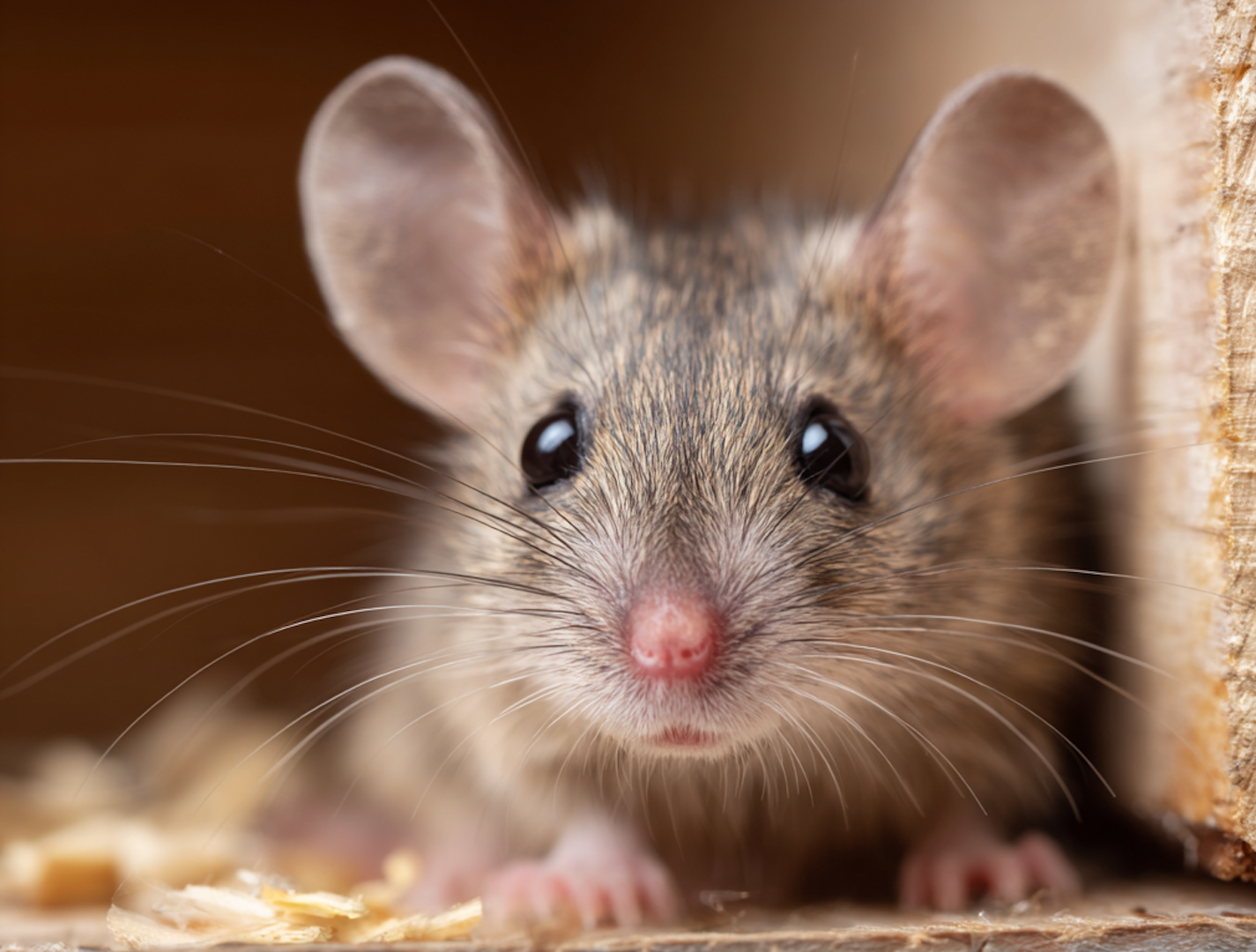The last thing that any business owner wants is to have their business blasted on the front page of The Morning Caller with a failed health inspection report, due to rodent droppings.
Unfortunately, cities like Allentown, Bethlehem, and Easton are more prone to rodent infestations due to shared building and sewage networks.
Regardless, even if you live in the suburbs or the outskirts of Allentown, you are not free from the wrath of rodents that infest homes during all seasons of the year.
While mouse traps and bait stations may offer short-term relief, you may find that one rodent leads to several others based on easy entrance points and various other factors of your property.
Today, we’re breaking down everything you need to know about rodents in Allentown, including how common they are, signs you have some on your property, and how to get rid of them if they have invaded your home.

Why Rodents Are a Common Problem in Allentown
Rodents are more common in urban areas, where houses and apartment buildings are close together. This allows rodents to easily travel from building to building in search of food, water, and shelter.
Sewers and other modes of underground transportation also make it easier for rodents to thrive in Allentown, compared to more suburban or rural areas where these pests tend to be less common.
Most Common Rodents Found in Allentown
Rodents are a persistent issue for many homeowners and businesses in Allentown, especially during colder months when they seek warmth and food indoors. While several species are known to cause trouble, a few stand out as the most common culprits in the area:
- House Mice: These small, agile rodents are the most common indoor pest. They can squeeze through tiny openings as small as a dime and are known for contaminating food, leaving droppings, and chewing through wires and insulation.
- Norway Rats (Brown Rats): Larger and more aggressive than house mice, Norway rats often nest in basements, crawlspaces, and around building foundations. They’re excellent burrowers and can cause significant structural damage by chewing through wood and other materials.
- Deer Mice: While less common, deer mice can be found in rural or wooded parts of Allentown. They are known carriers of hantavirus, a potentially dangerous disease, making their presence a health concern. They often nest in sheds, garages, and attics.
- Roof Rats: More common in coastal or warmer climates, roof rats occasionally show up in Allentown. True to their name, they prefer high places and often nest in attics or rafters. They’re sleek, excellent climbers, and can be tricky to trap.
- Voles: Sometimes mistaken for mice, voles are more commonly found outdoors. They create runways in grassy areas and can cause damage to lawns, gardens, and landscaping by feeding on roots, bulbs, and bark.
Signs You May Have a Rodent Problem
Rodents are secretive by nature, so spotting one scurrying across the floor may only hint at a bigger issue hiding behind the scenes. Here are some of the most common signs that could indicate a rodent infestation in your home or business:
- Rodent Droppings – Small, dark pellets typically found near food sources, in cabinets, drawers, or along walls. Mouse droppings are about the size of a grain of rice, while rat droppings are larger and blunt on the ends.
- A Strong, Musky Odor – A lingering smell in certain areas of the home can be a sign of a rodent nest or urine. The stronger the odor, the closer you may be to an active nesting site.
- Gnaw Marks – Rodents have constantly growing teeth and must chew to keep them trimmed. Look for bite marks on wood, plastic, electrical wires, food packaging, and even furniture legs.
- Scratching or Scurrying Sounds – If you hear faint movement within your walls, ceilings, or floors—especially at night—rodents are likely the cause.
- Damaged Food Packaging – Finding torn or chewed-through boxes and bags in your pantry is a strong sign that rodents have been helping themselves to your groceries.
- Nesting Materials – Rodents build nests using shredded paper, fabric, insulation, or plant matter. Discovering piles of these materials in secluded areas like behind appliances, inside drawers, or in attics is a red flag.
- Track Marks or Grease Trails – Rodents often follow the same paths, leaving behind greasy smudges or footprints along walls, baseboards, and dusty surfaces.
Health Risks and Property Damage from Rodents
Having rodents present in the home can pose a number of health risks for those living there, as these pests are known to carry and spread harmful diseases such as Hantavirus, Leptospirosis, and Salmonellosis. Rodents can also cause significant damage to a property and random household objects. They are known for gnawing on furniture, wires, food packaging, and even insulation.
DIY Methods to Deter and Remove Rodents
You can use several DIY methods to prevent rodents from invading your home, though they may only offer short-term relief. One commonly used method involves using steel wool to fill holes and gaps in walls and floors as a way to block rodents from entering the home.
Many homeowners rely on mouse traps to catch any rodents that end up making their way into the home, but mouse traps have mixed efficacy.
Certain essential oils are also known to deter rodents, such as peppermint, lavender, and eucalyptus oils, but this shouldn’t be considered a serious, long-term solution.
Rodent-Proofing Your Home: Long-Term Prevention
Preventing rodents from invading your home should be a long-term strategy, not just a temporary solution. Once rodents find access to food, warmth, and shelter, they can be difficult to evict. That’s why proactive prevention is key. Here are several important steps you can take to keep rodents out for good:
- Keeping your home clean and tidy: Regular cleaning helps eliminate crumbs, spills, and potential nesting areas. Pay special attention to kitchens, pantries, and under appliances, where food debris often accumulates unnoticed.
- Properly sealing and storing all food and beverages: Use airtight containers for dry goods and avoid leaving pet food or open snacks out overnight. Rodents have a keen sense of smell and are drawn to unsealed food items.
- Sealing possible entry points: Inspect the exterior of your home for cracks, holes, or gaps, especially around windows, doors, utility lines, and vents. Use steel wool, caulk, or metal mesh to seal any openings larger than ¼ inch.
- Keeping your grass and foliage neatly trimmed: Overgrown shrubs, bushes, and tall grass provide hiding spots and nesting grounds for rodents. Maintain a clean perimeter around your home to make it less attractive to rodents.
- Removing excess clutter from the home: Piles of newspapers, cardboard boxes, clothing, and other clutter offer ideal nesting material and hiding places for rodents. Keeping storage areas organized and clutter-free makes it harder for them to settle in.
When to Involve a Pest Control Professional
Whenever you’re dealing with a pest infestation of any kind, it is always wise to reach out to a pest control professional at the first sign of an infestation. A trusted and experienced exterminator will be able to inspect your home to confirm the type of pest you’re dealing with and the severity of the infestation before recommending a plan of action to get rid of the rodents safely and effectively.
FAQs
What time of year are rodent infestations most likely?
Rodent infestations can happen any time of year, but they are more common during the fall and winter months, when the temperatures drop and rodents seek food and shelter indoors.
What attracts rodents to my property?
Rodents are most attracted to places where they can find food, water, and shelter from the elements. If your home or property is cluttered or has food and beverages that aren’t properly stored, you are at a higher risk of a rodent infestation.
Are rodents dangerous to my health?
Yes, dealing with a rodent infestation can be harmful to your health. These pests are known to carry and spread diseases through bites, direct contact, or food and water contamination.



























